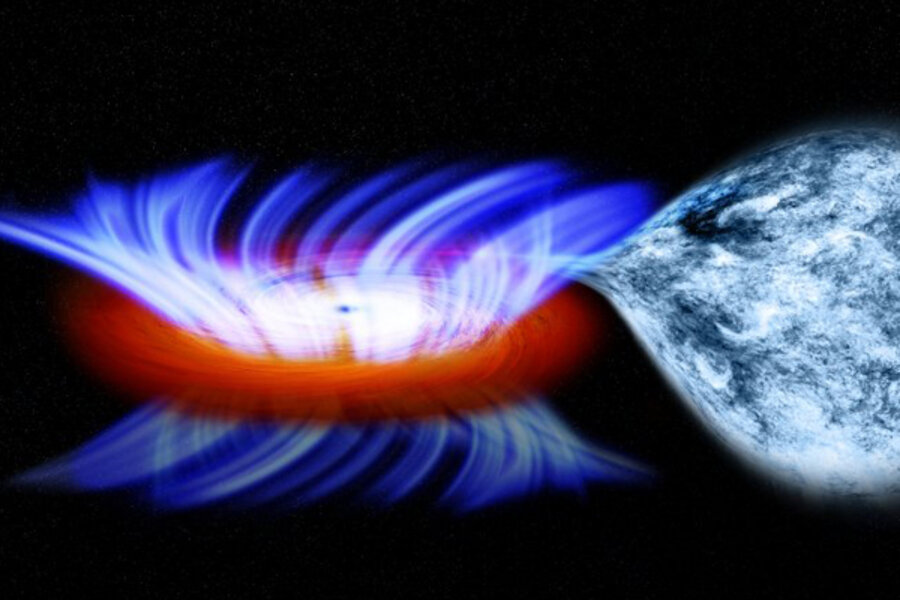Black hole produces 'cosmic Category 5 hurricane'
Loading...
Scientists have measured the fastest winds yet observed from a stellar-mass black hole, shedding light on the behavior of these curious cosmic objects.
The winds, clocked by astronomers using NASA's Chandra X-ray Observatory, are racing through space at 20 million mph (32 million kph), or about 3 percent the speed of light. That's nearly 10 times faster than had ever been seen from a stellar-mass black hole, researchers said.
"This is like the cosmic equivalent of winds from a Category 5 hurricane," study lead author Ashley King, of the University of Michigan, said in a statement. "We weren't expecting to see such powerful winds from a black hole like this."
A stellar-mass black hole, which is born when an extremely massive star collapses, typically contains about five to 10 times the mass of our sun. The stellar-mass black hole powering this super wind is known as IGR J17091-3624, or IGR J17091 for short. [Photos: Black Holes of the Universe]
IGR J17091 is a binary system in which a sun-like star orbits a black hole. It's found in the central bulge of our Milky Way galaxy, about 28,000 light-years from Earth.
IGR J17091's wind matches some of the fastest generated by supermassive black holes, which are millions or billions of times more massive. Supermassive black holes are thought to reside at the heart of most if not all active galaxies, including our own Milky Way.
"It's a surprise this small black hole is able to muster the wind speeds we typically only see in the giant black holes," said co-author Jon Miller, also from the University of Michigan. "In other words, this black hole is performing well above its weight class."
Another surprising finding from the new study is that the wind, which comes from a disk of gas surrounding the black hole, may be blasting more material into space than the black hole is capturing.
"Contrary to the popular perception of black holes pulling in all of the material that gets close, we estimate up to 95 percent of the matter in the disk around IGR J17091 is expelled by the wind," King said.
Unlike hurricane winds on Earth, the wind from IGR J17091 is blowing in many different directions at once. This pattern distinguishes it from a jet, in which material flows in focused beams perpendicular to a black hole's disk, often at nearly the speed of light.
Jets have been seen coming from IGR J17091 before. But observations made with the National Radio Astronomy Observatory's Expanded Very Large Array in New Mexico showed that a radio jet from the system was not present when the super-fast wind was blowing.
This agrees with observations of other stellar-mass black holes, suggesting that ultra-speedy winds can quash jet production, researchers said.
Scientists estimated IGR J17091's wind speeds using a spectrum made by Chandra in 2011. Observations made by the space telescope two months earlier showed no such winds, meaning the black hole's gale likely switches on and off over time.
Astronomers think that magnetic fields in the accretion disks of black holes are responsible for producing both winds and jets. Characteristics of the magnetic fields and the rate at which material falls toward the black hole are thought to determine whether jets or winds are produced, researchers said.
Follow SPACE.com for the latest in space science and exploration news on Twitter @Spacedotcom and on Facebook.







